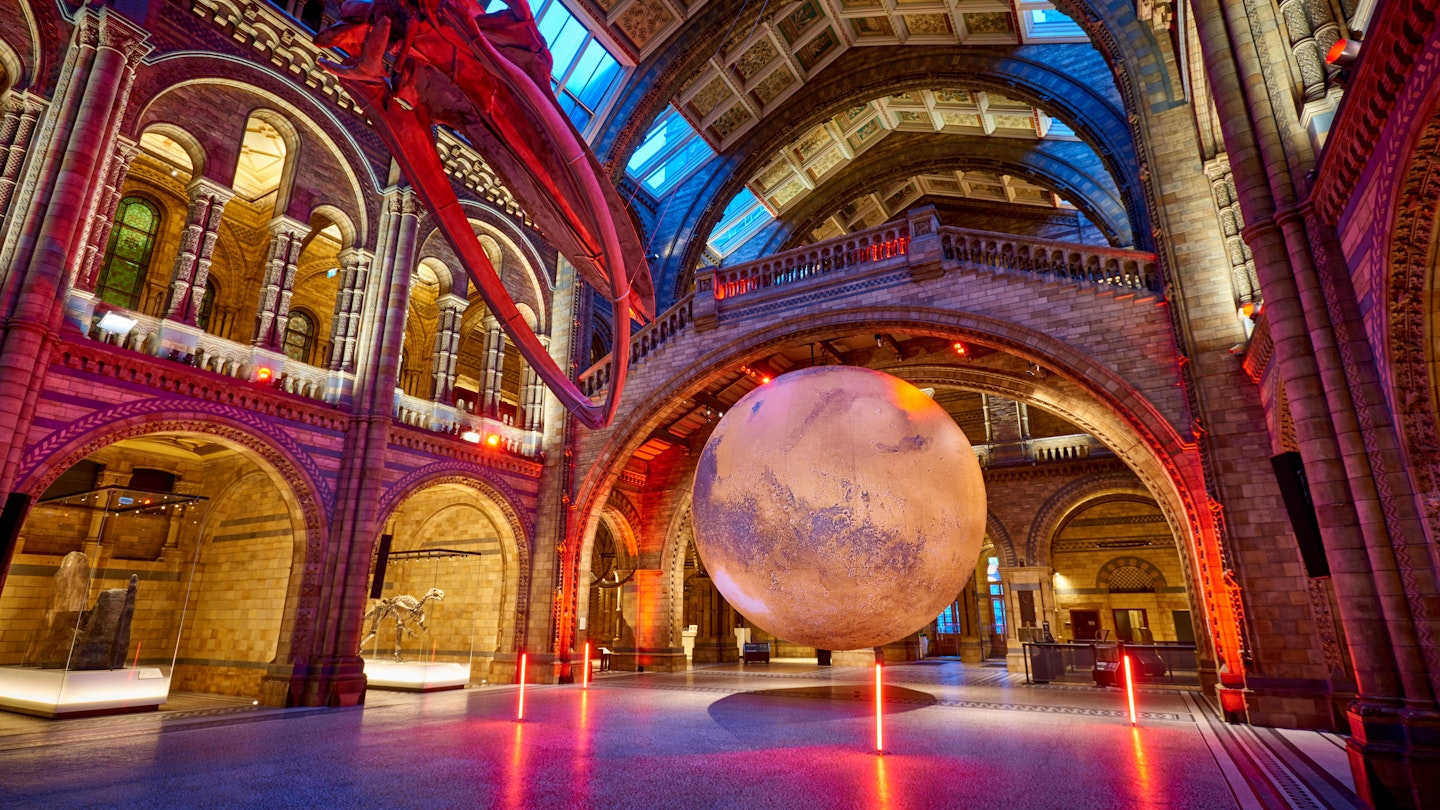Giant Mars Replica Unveiled at the Natural History Museum
The Natural History Museum in London has unveiled a stunning giant replica of Mars to celebrate the arrival of NASA’s Perseverance rover on the red planet.
About the Mars Artwork
This impressive seven-meter-wide artwork, suspended from the ceiling in Hintze Hall, was created by UK artist Luke Jerram. The piece not only features artwork from previous NASA missions, but it also serves as a tribute to the rover’s seven-month journey from Earth to Mars.
During its mission, the Perseverance rover aims to search for evidence of past microbial life. Moreover, scientists from the museum are collaborating with NASA and the European Space Agency to provide insight on rock and soil sample collection strategies.
COVID-19 Impact on Museum Access
Unfortunately, while the Mars installation is a remarkable sight, the Natural History Museum is currently closed due to COVID-19 restrictions. Visitors will have to wait to see this extraordinary artwork in person.

The Perseverance Rover’s Mission
The Perseverance rover is designed to select scientifically interesting Martian rock and soil samples, which could help reconstruct the Martian surface environment billions of years ago, when life potentially existed.
Landing at Jezero crater—a vast, 28-mile-wide depression with diverse sediment from an ancient river delta—the rover encounters an ideal environment where past life may be preserved. This vehicle is the largest and most advanced ever sent to land on another planet.
Throughout its mission, Perseverance will drill 7cm into the Martian rocks and seal these samples in specially designed tubes. Once the rover reaches a suitable location, these tubes will be placed on the surface for a future retrieval mission anticipated for the early 2030s.
Significance of the Mission
Prof Caroline Smith, one of the museum’s scientists, states: “The Perseverance rover has been specifically designed to search for evidence of ancient life on Mars. Its ability to collect interesting samples for potential return to Earth gives us the best chance thus far to finally answer the critical question, ‘Was there life on Mars?’. This discovery would be one of the most significant scientific breakthroughs in history.”




